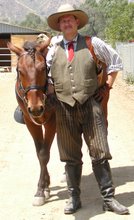Just played through the first turn of Superpowers at War and I have to say it's an interesting system but in need of a bit more development.
Because of the iniative rules for the "Accross the Rhine" scenario, NATO got to move first, which is a good thing. With the on-board German territorials, I set up a cordon to block off "Entry Area B" in the North, keeping to the mandated two-hex distance and using the urban hexes as bastions.
To the south, I was able to deploy more territorials along with the 21st Panzer Brigade (I received the 21st, along with some 7th Panzer Division divisional elements and the British 15th Brigade as variable reinforcements), entering from the east, to form a cordon to block "Entry Area A". The center of the German defense is the Rhine, combined with using urban hexes (Bonn is especially good). Because of the entry rules, the slower territorials had to deploy closest to the entering Soviet units.
The Belgians spend the turn racing towards the front while I kept the Dutch 304th Territorial Brigade close to Maaschrict to counter any Soviet airborne drops. I also kept the 82 Airborne and Belgian Special Forcs units off the board as a reserve (especially since air superority was undecided). The US lost one artillery batallion of the 1st Cavalry Division when the die roll went wrong on air transport (presumed that the transports were shot down by stray Soviet fighters).
Because of the using urban hexes as defensive positions, the Soviets were unable to use overrun as they entered the board so they had to set up their attacks. The Soviets decided to hold back on dropping the 103rd Airborne Division pending a better result on the air superority table. Nothing disastrous occurred for NATO although they lost two batallions of territorials. I anticipate that the front is going to blow wide open next turn.
So far, the things that stick out are that while the combat system attempts to blend morale into the combat results, it's a real pain to calculate the combat factors. A better job could have been done integrating all the elements- you have to remember to not only check the terrain table for combat effects, but you also have remember that all firepower is halved in the second movement/combat phase and armor and infantry can further be affected by terrain. All good ideas but the execution is clunky.
What is also interesting is that combat is calculated by adding up "firepower" of the ground units- no real discrimination is made between artillery and ground. Airpower can add more firepower points and chemical munititions force a collum shift on the combat chart. The firepower total can be affected by terrain (urban hexes, for example halve the total) and then once again if it's the second phase. Firepower can drastically go down.
I've still got to get a handle on the combat chart but results are possible at low odds (as well as adverse results).
Overall, some interesting ideas are here and it's a bit easier to play than say the Central Front series. However, calculating combat is a bit fiddly and the whole airpower/tranpsort rule section just doesn't seem to mesh well. OK, these are initial impressions, that can change.
More soon!
Because of the iniative rules for the "Accross the Rhine" scenario, NATO got to move first, which is a good thing. With the on-board German territorials, I set up a cordon to block off "Entry Area B" in the North, keeping to the mandated two-hex distance and using the urban hexes as bastions.
To the south, I was able to deploy more territorials along with the 21st Panzer Brigade (I received the 21st, along with some 7th Panzer Division divisional elements and the British 15th Brigade as variable reinforcements), entering from the east, to form a cordon to block "Entry Area A". The center of the German defense is the Rhine, combined with using urban hexes (Bonn is especially good). Because of the entry rules, the slower territorials had to deploy closest to the entering Soviet units.
The Belgians spend the turn racing towards the front while I kept the Dutch 304th Territorial Brigade close to Maaschrict to counter any Soviet airborne drops. I also kept the 82 Airborne and Belgian Special Forcs units off the board as a reserve (especially since air superority was undecided). The US lost one artillery batallion of the 1st Cavalry Division when the die roll went wrong on air transport (presumed that the transports were shot down by stray Soviet fighters).
Because of the using urban hexes as defensive positions, the Soviets were unable to use overrun as they entered the board so they had to set up their attacks. The Soviets decided to hold back on dropping the 103rd Airborne Division pending a better result on the air superority table. Nothing disastrous occurred for NATO although they lost two batallions of territorials. I anticipate that the front is going to blow wide open next turn.
So far, the things that stick out are that while the combat system attempts to blend morale into the combat results, it's a real pain to calculate the combat factors. A better job could have been done integrating all the elements- you have to remember to not only check the terrain table for combat effects, but you also have remember that all firepower is halved in the second movement/combat phase and armor and infantry can further be affected by terrain. All good ideas but the execution is clunky.
What is also interesting is that combat is calculated by adding up "firepower" of the ground units- no real discrimination is made between artillery and ground. Airpower can add more firepower points and chemical munititions force a collum shift on the combat chart. The firepower total can be affected by terrain (urban hexes, for example halve the total) and then once again if it's the second phase. Firepower can drastically go down.
I've still got to get a handle on the combat chart but results are possible at low odds (as well as adverse results).
Overall, some interesting ideas are here and it's a bit easier to play than say the Central Front series. However, calculating combat is a bit fiddly and the whole airpower/tranpsort rule section just doesn't seem to mesh well. OK, these are initial impressions, that can change.
More soon!










1 comment:
I finally decided to post a comment.
Keep up the posting.
Post a Comment